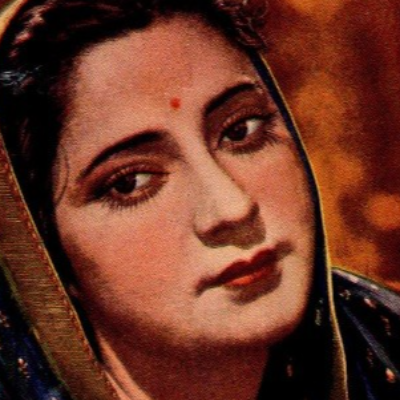Soumendu Roy

Subscribe to read full article
This section is for paid subscribers only. Our subscription is only $37/- for one full year.
You get unlimited access to all paid section and features on the website with this subscription.
Not ready for a full subscription?
You can access this article for $2 , and have it saved to your account for one year.
- Born: 7 February, 1933
- Primary Cinema: Bengali
Known for his meticulously planned lighting and eye for detail, Soumendu Roy is one of the greatest cinematographers to have worked in Indian cinema. He is mostly associated with Satyajit Ray, though he also worked with stalwarts like Tapan Sinha, Tarun Majumdar, Nripen Gangopadhyay, Utpalendu Chakraborty, M S Sathyu, Raja Sen, and Buddhadeb Dasgupta.
Born on 7 February 1933, he came to study in Calcutta in 1942. While studying at Tirthapati Institution he befriended another boy named Asit Raha. Raha’s brother had a studio called Poluphoto Avenue. They used to frequent the studio and he started picking up the basics of photography while working with his friend’s camera. At this juncture, his sister promised to buy him a camera if he could pass his matriculation examinations. Roy needed no further prodding and successfully passed his tests. The resultant reward was a Kodak Brownie which became his first camera. He met the director Hiranmay Sen at a cousin’s wedding who introduced him to veteran cinematographer Ramananda Sengupta. In 1953 he started visiting Technicians Studio regularly. He entered into an apprenticeship under Dinen Gupta. Dinen Gupta was working as the camera caretaker in Pather Panchali (1955). Being on the sets of Pather Panchali brought him in contact with Satyajit Ray, Subrata Mitra and Bansi Chandragupta – three individuals who would go on to become mentor figures for him. He was also fond of the legendary Chhabi Biswas, having worked as an assistant cinematographer in a number of his films like Jamalaye Jibanta Manush (1958), Devi (1960) and Kanchenjungha (1962). The first opportunity to work as an independent cinematographer came when Ray wanted to make a documentary on Rabindranath Tagore. He offered the responsibility of shooting the documentaty to Roy, while Subrata Mitra was supposed to shoot his Tagore adaptation Teen Kanya (1961). But Subrata Mitra developed an eye problem, leading to Roy shooting both features and doing an impressive job. He designed three different kinds of lighting for the three Tagore stories being adapted. His next venture was Abhijan (1962) which involved shooting car sequences at night. He utilised a plane light and 200 ASA film to achieve the desired effect. Circumventing the bottlenecks of limited technology and budget, yet achieving spectacular effects became a hallmark of his work. Adapting a technique used by Subrata Mitra in Charulata (1964) allowed him to create shadowless light for Shundi Raja’s scenes in Goopy Gyne Bagha Byne (1969). He set a light behind a triangle to achieve the intricate lighting of the ghost scenes. He also shot Kapurush-o-Mahapurush (1965), Chiriyakhana (1967), Aranyer Din Ratri (1970), Pratidwandi (1971), Seemabaddha (1972), Ashani Sanket (1973). Ashani Sanket was his assignment in colour. Initially nervous at the prospect, he pulled off the feat in a manner brilliant enough to win him his first National Award for Best Cinematography. He won his second National Award for Sonar Kella (1974). His penchant for trick photography was in display in the two Feluda adaptations – Sonar Kella and Joybaba Felunath (1975). He won his third National Award for Shatranj Ke Khilari (1977). His last film with Satyajit Ray was Ghare Baire (1984).
He ventured south to shoot Sreedhar Rajan’s acclaimed Kan Sivanthaal Man Sivakkum (1983) which won him the Tamil Nadu State Film Award for Best Cinematography. He was in charge of shooting two of Rabi Ghosh’s directorial ventures Sadhu Judisthirer Karcha (1974) and Nidhiram Sardar (1976). With Tapan Sinha he worked in Ek Doctor Ki Maut (1990), Satabdir Kanya (1996) and Ajab Gayer Ajab Katha (1998). He collaborated with Utpalendu Chakraborty in Debshishu (1987) and with Buddhadeb Dasgupta in Charachar (1993). He shot many documentaries like Ray’s Sikkim, Bala, The Inner Eye, Bansi Chandragupta’s Glimpses of West Bengal and Destination Calcutta. He worked with Edmund Hillary in the documentary Tigers of Mountains. For his work in Suchitra Mitra, he won the National Award for Best Cinematography in a Documentary. After his retirement from films, he worked in Roopkala Kendra, an Indo-Italian film institute. Two documentaries have been filmed on his life and career – Portrait of a Cinematographer and Soumendu Ray.
References
https://www.youtube.com/watch?v=N_7kn2X2stc&ab_channel=AnindyaRoy










.jpg)



